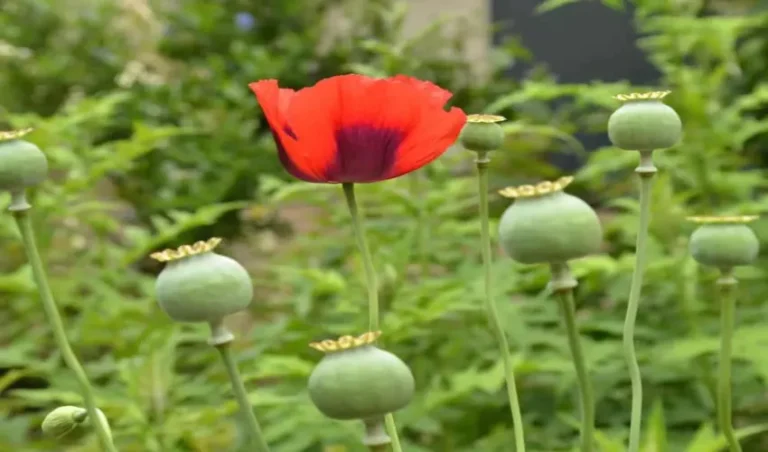Poppy heads, often admired for their unique shape and striking appearance, are a symbol of beauty, nature, and even remembrance. Beyond their decorative charm, poppy heads have several intriguing aspects that are worth exploring. In this article, we delve into five fascinating facts about these captivating botanical structures.
- Poppy Heads Are the Seed Pods of Poppies
Poppy heads are the seed pods of the poppy plant, scientifically known as Papaver. These pods form after the poppy flowers have bloomed and the petals have fallen off. The head itself is round or oval, with a distinctive crown-like shape, and it is often compared to a miniature cap. Inside, the poppy head contains numerous tiny seeds, which are harvested and used for a variety of purposes, including culinary uses and medicinal purposes.
The seeds inside a poppy head are small, dark, and kidney-shaped. After the seeds mature, the pod dries out and opens up, releasing them into the wind. This natural process helps the poppy plant spread its seeds and regenerate.
- Poppy Heads Have Medicinal Uses
While poppy flower buy online seeds are commonly used in baking and cooking, poppy heads themselves have a much deeper historical significance in the realm of medicine. The opium poppy (Papaver somniferum) is the source of opiates like morphine, codeine, and heroin, which are derived from the latex inside the poppy head.
For centuries, opiates have been used in medical practices for pain relief, cough suppression, and even as sedatives. Morphine, in particular, is a powerful painkiller that revolutionized medical treatments during the 19th century. Though the poppy head’s medicinal properties have sparked both medical advancements and controversies, the plant remains a cornerstone of the pharmaceutical industry.
- Poppy Heads Symbolize Remembrance
The iconic red poppy head holds significant cultural and symbolic value. During World War I, the poppy became a symbol of remembrance for fallen soldiers, largely due to the famous poem “In Flanders Fields” by Lieutenant Colonel John McCrae. The fields of Flanders in Belgium, where the battle was fought, were known for their vibrant red poppies that grew amidst the devastation of war.
Since then, the poppy head has been used in various commemorative activities, particularly on Remembrance Day or Armistice Day (November 11), when people wear poppy pins in honor of those who have lost their lives in conflict. The deep red color of the flower serves as a reminder of sacrifice and the brutal realities of war.
- Poppy Heads Are Used in Art and Decoration
The distinctive shape and texture of poppy heads have made them a popular choice for artists and decorators throughout history. Their sculptural form and delicate appearance have inspired everything from paintings and prints to jewelry and home décor. The seed pods’ intricate structure, with its rounded top and prominent ridges, makes them visually striking, often serving as a focal point in floral arrangements, wreaths, and craft projects.
In addition to their use in visual art, dried poppy heads are often incorporated into DIY projects like wreath-making and creating rustic centerpieces. Their natural, earthy tone pairs well with a variety of aesthetic styles, from shabby chic to modern minimalism.
- Poppy Heads Can Be Toxic
While poppy seeds are generally safe for consumption, it’s important to note that parts of the poppy plant, particularly the seed pod, can be toxic if consumed improperly. The opium poppy, in particular, contains alkaloids such as morphine and codeine, which can be harmful when ingested in large quantities.
Although poppy seeds used in baking are thoroughly cleaned and contain only trace amounts of these substances, consuming large amounts of unwashed or raw poppy seeds could potentially lead to a mild overdose. This is why it is essential to only use poppy seeds that are specifically intended for culinary purposes. It’s also important to exercise caution when handling poppy pods, as the latex inside can cause irritation to the skin.
In conclusion, poppy heads are more than just a decorative element. They have a fascinating history, ranging from their medicinal uses in ancient cultures to their status as a symbol of remembrance. Whether you appreciate them for their beauty, their role in art, or their historical significance, poppy heads are undeniably captivating.
